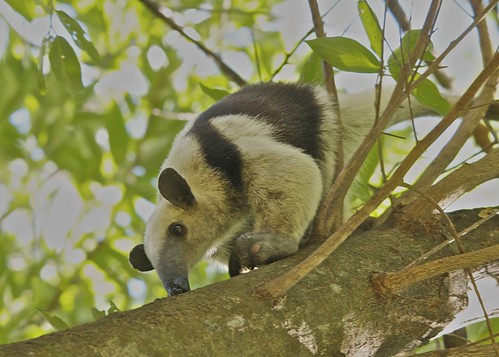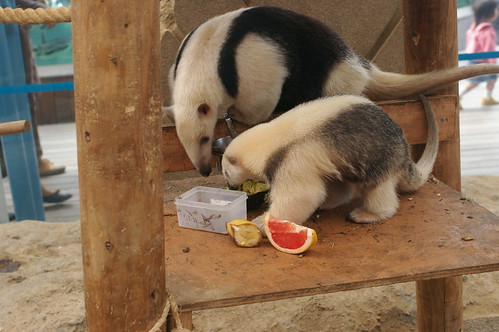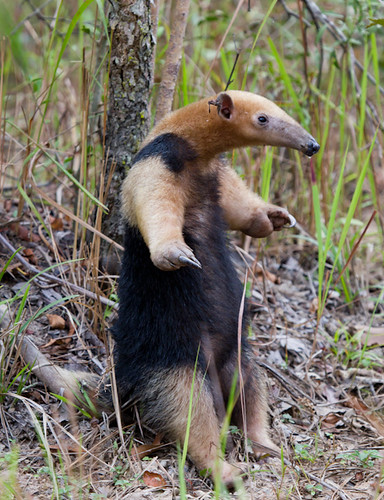We've talked about the biggest anteater species, the giant eater and the smallest, the silky anteater. Now for the last type of anteaters, the Tamandua.
 by Bird Brian
by Bird Brian
There are 2 kinds of Tamanduas, the Southern and the Northern.
Tamanduas are also referred to as “lesser anteaters” and Southern Tamanduas are often referred to as “collared anteaters.”
 by pelican
by pelican
Tamanduas live in South America.
 by Bird Brian
by Bird BrianThere are 2 kinds of Tamanduas, the Southern and the Northern.
Tamanduas are also referred to as “lesser anteaters” and Southern Tamanduas are often referred to as “collared anteaters.”
 by pelican
by pelican Tamanduas live in South America.
The Southern tamandua's vest like markings extend form their shoulder to their rump. The Northern tamandua's markings stop before their back legs, not extending into the rump area.
 by Sinara Conessa
by Sinara Conessa Tamanduas have an extra long claw on their third toe. They use it for defense and digging. They walk on the outside of their feet so as not to hurt themselves with their own claws.
The tamandua can eat up to 9000 bugs in a day. They also eat some fruit.
 by pelican
by pelican Tamanduas have a prehensile tails. The underside of their tail has no hair.
Their tail is used for balance and climbing. They sometimes use their tail for a pillow.
 by Deni Williams
by Deni Williams Tamandua can be quite smelly. When threatened they release a unpleasant odor to deter predators from a gland at the base of their tail.
Tamandua mouths are very small, about as wide as a pencil eraser.
We've now talked about all of the true anteaters. Echidnas, pangolins and aardvarks are often called anteaters but none of them are true anteaters. Which was your favorite of the anteaters?





